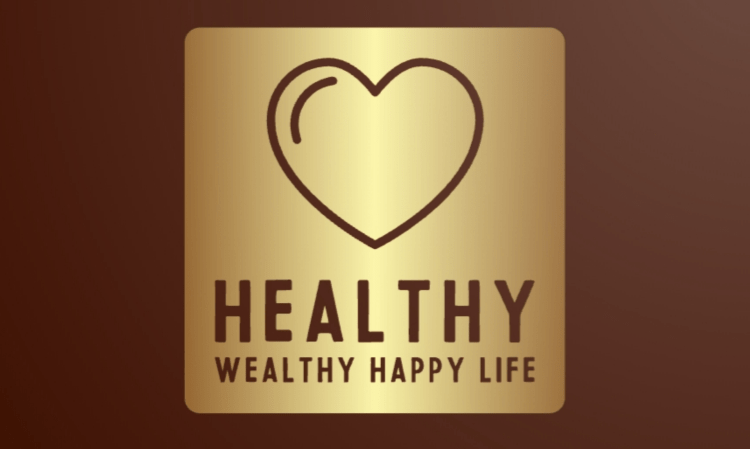ABCD OF ‘OPTIMAL HEALTH’-‘A’=Awareness
ABCD OF ‘OPTIMAL HEALTH’-‘A’=Awareness. A TO Z ALFABETICAL WORDS USED FOR OPTIMAL HEALTH.
-
1) Attitude of Awareness
- 2) Believe
- 3) Change of Habits
- 4) Decision for doing Excellent
- 5) Effort of Enthusiasm
- 6) Freedom from fear
- 7) Gratitude & Never give up
- 8) Happiness
- 9) Hope for Healing
- 10) Independence
- 11) Join Yoga class
A TO Z WORDS OF ‘OPTIMAL HEALTH’
-
12) Knowledge of & “health awareness”
- 13) Love yourself
- 14) Mind a full of motivation
- 15) Not to worry Never think negative
- 16) Option for optimist
- 17) Peace of mind & positive thinking
- 18) Quick action
ABCD OF ‘OPTIMAL HEALTH’.
-
19) Relationship with soul-mind-body
- 20) Self-confidence Building
- 21) Unshakable & unlimited
- 22) Victory
- 23) Wellness
- 24) excellence work
- 25) Young
- 26) Zeal
ABCD OF ‘OPTIMAL HEALTH’-‘A’=Awareness
-
1) Attitude of Awareness
- Becoming more self aware helps you understand your personality, values, and deepest desires.
- Additionally, learning more about yourself helps you create your best life and make positive changes to improve your weaknesses.
- Being self aware boosts your emotional intelligence, so it’s a valuable trait that might help you relate to others.
- Raise your self awareness by learning about yourself, building emotional awareness, and getting feedback from others.
ABCD OF ‘OPTIMAL HEALTH’-‘A’=Awareness
How to Raise Your Self Awareness?
Learning about Yourself
Rank your top 5-10 priorities so you know what’s important to you.
- Make a list of the things you most value in life, such as your family.
- Then, choose 5-10 items on your list that are most valuable to you.
- Rank them in order of importance, with 1 being your top priority.
- This helps you understand what’s truly important to you.
- For instance, your list might include
- 1) Your partner,
- 2) Your friends,
- 3) Your family,
- 4) Helping your community,
- 5) Self-expression.
Make a list of your personal goals to find what you want in life.
- Imagine your ideal life and what you would be doing. Then, write down what goals you’d need to accomplish to get your dream life.
- Rank these goals in order of importance so you know what you want to achieve in life.
- For instance, let’s say you dream of living by the beach and helping animals.
- You might set goals to move to a city near the beach, get a job at a vet clinic, and volunteer for an animal welfare group.
Identify your strengths and weaknesses.
- Knowing your strengths and weaknesses helps you understand yourself so you can live your best life.
- Discover your strengths by assessing your knowledge, skills, and traits.
- Additionally, think of 3-5 times when you felt most successful in life.
- Then, make a list of areas where you want to improve to find your weaknesses.
- For example, you might write down that you’re good at math, are a fast runner, and are creative.
- As another example, you may decide that a time you felt most successful was when you helped your friend with their homework.
- This might help you realize that you’re good at teaching and enjoy helping others.
- When it comes to weaknesses, focus on what you can improve.
- For instance, you might struggle with public speaking, which could be a weakness for you.
Take online psychometric tests to learn more about your personality.
- Do an online search for personality tests that can help you learn more about your personal traits, your learning style, and your strengths.
- Do several different tests to help you learn more about yourself.
- Keep a copy of your results so you can review them when you’re reflecting on yourself.
- For example, you might take an online test to find your Myers-Briggs Type Indicator, which helps you understand your personality.
- You might also take quizzes to evaluate your verbal and numerical reasoning skills.
Write about your feelings and experiences in a journal.
- Journaling helps you better understand your thoughts and emotions.
- Set a goal to write in your journal every day, even if you just write a little.
- Discuss what’s happening in your life and how you feel.
- Then, review what you’ve written to help you self-reflect.
- To get the most out of your journaling habit, set a time to revisit your old entries.
- For instance, you might reread the prior month’s entries on the first weekend of the month.
- Do your best to write every day.
- It’s okay if you only have time to write a quick list or jot down incomplete sentences.
ABCD OF ‘OPTIMAL HEALTH’-‘A’=Awareness
Building Emotional Awareness
Allow yourself to feel your emotions so they pass.
- Part of self awareness is being able to understand your emotions.
- Acknowledge how you’re feeling and give yourself permission to experience the emotion.
- This allows your feelings to pass.
- Fighting or suppressing your emotions can make them boil over and makes it take longer for you to work through them.
- Be honest about how you feel and give yourself time to deal with it.
- For example, you might feel sad after getting passed over for a promotion.
- Don’t try to fight the feeling! Tell yourself, “I’m sad right now because I thought I was going to get the job.
- It’s okay to feel this way.”
Incorporate stress relievers into your routine to prevent burn out.
- Stress is a normal part of life, but it can be harmful in large doses.
- When you’re under a lot of stress, you might not be able to deal with your emotions.
- To help you manage your stress, identify stress relievers that work for you.
- Then, incorporate them in your daily routine.
- For instance, you might call a friend after a stressful day at work, color in an adult coloring book to decompress, or take a warm bath to release the tension in your body.
- Try out different stress relievers to see what works for you.
- Options include things like going for a walk, journaling, sipping on hot tea, playing with your pet, reading, or engaging in a hobby.
Determine what triggers you emotionally to understand yourself.
- Think about the times you’ve gotten really upset in the past.
- Then, identify what was happening in that moment.
- This is an emotional trigger that you have.
- Knowing your triggers helps you better manage your emotional reactions to them.
- For example, let’s say you blew up at your friend for yelling at a dog.
- You might realize that seeing people be mean to animals is an emotional trigger for you.
- In the future, you might take a deep breath and count to 10 before you address your concerns about how animals are being treated.
Use mindfulness to stay focused on the present moment.
- Mindfulness helps you stay grounded in the present so you aren’t worrying about the past or future.
- To be more mindful, engage your 5 senses of sight, sound, smell, touch, and taste. Here are some ways to do this:
- Sight: Describe what you see around you or focus on a specific color.
- Sound: Notice the sounds you hear in your environment or turn on some music.
- Smell: Pick out the smells around you or sniff an essential oil.
- Touch: Feel the texture of an item or rub your hand on your skin.
- Taste: Stick your tongue out to taste the air or chew a piece of gum.
Meditate for at least 10 minutes a day for a clear mind.
- Daily meditation helps you calm your mind so you can think better.
- Additionally, it helps you stay relaxed so you’re better able to control your emotions.
- For a simple meditation, sit in a comfortable position and close your eyes.
- Then, focus on your breath.
- If your mind wanders, bring it back to your breath.
- Look for guided meditations online or use a free app, such as Headspace, Calm, or Insight Timer.
ABCD OF ‘OPTIMAL HEALTH’-‘A’=Awareness
Ask people whose opinions you value to give you feedback.
- Identify people in your life who you think will give you an honest, constructive evaluation of yourself.
- Then, ask them to tell you how they perceive you, what they think your strengths are, and how you can improve.
- Collect their feedback and review it to better understand yourself.
- For instance, you might send 5 of your closest friends and family members an email asking them for their opinion about you.
- You might ask the following questions:
- 1) What 10 words would you use to describe me?
- 2) What are my top 5 strengths?
- 3) What are 3 ways that I could improve myself?
Pay attention to how others react to you.
- Watch other people’s body language when they’re around you.
- Notice if they appear comfortable and approach you with ease or if they keep their distance or close them self off.
- Look for trends in how people act around you to get an idea about how you’re perceived.
- A person has open body language when they face you, keep their arms open or at their sides, and don’t cross their legs when sitting.
- They have closed body language when they turn away from your, fold their arms across their body, or cross their legs while sitting.
- Keep in mind that how people act around you is partially based on their personality and what’s comfortable for them.
- Don’t assume that someone who is folding their arms in front of their body is offended by you.
- They might just be a nervous person.
Review the feedback you get at work or school.
- You probably receive regular feedback about your job performance or academic progress.
- Read the critiques or job reviews that you receive.
- Additionally, talk to your supervisor or instructor to ask questions or learn more about your progress.
- Then, implement the feedback to improve your performance.
- For example, read over your performance review at work.
- Similarly, review your grades and written comments on school assignments.
- If your workplace or class doesn’t have built-in reviews, ask your supervisor or instructor to give you regular feedback.
- For instance, they might review your performance monthly or quarterly.
Get a friend to film you so you can watch yourself.
- Watching yourself on video allows you to view how others see your facial expressions and mannerisms.
- Ask your friend to make a video of you while you’re having a conversation or giving a presentation.
- Then, watch the video to see what you can learn about yourself.
- Ask your friend to film you during different activities.
- For instance, they might film you talking with a friend, interacting with an authority figure, and giving a presentation.
- This allows you to evaluate yourself in different scenarios.
- It’s best to make several different videos at different times so you can watch yourself on different days.




